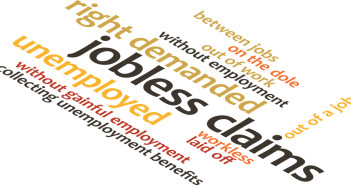Within the two mandates of the Federal Reserve, inflation was the weak spot and jobs were the bright spot. A very steady and solid in the amount jobs moved the focus in recent jobs reports to wages, often seen as the source of core inflation, the inflation the Fed cares about.
With an unemployment rate around 5% and a positive move in the participation rate, many talked about the US nearing full employment. When the labor market looks good, also those depressed and discouraged workers are returning to the workforce.
Approaching full employment, we should begin seeing fewer job gains as almost everybody is working. However, as employment is readily available, employers would be competing on employees resulting in higher wages.
Indeed, in the last jobs report for April we have seen exactly that: fewer than expected job gains at 160K but a more upbeat rise in wages: 2.5% y/y, above the averages seen last year.
Worrying signs?
However, things might be turning negative in jobs, and for the wrong reasons. First, another examination of the jobs report shows an unwanted drop in participation rate, a retreat after a long buildup from the lows.
And also jobless claims are painting a negative picture, coming from a very promising situation beforehand. During a few excellent weeks, jobless claims fell under 250K, to historical low levels. The moving average dropped under 260K, a rare feat as well. But, this reversed and more than once: claims rose to 274K last week and jumped to 294K this time. This matches a high seen in January and beforehand only in March 2015.
This jump may be a one-off or perhaps a two-off if you wish. Also the low gain in jobs could be just part of the non-linear improvement in the economy. It’s never a one-way street.
However, jobs might be reacting to the slowdown seen in Q4 2015 and Q1 2016. Both quarters saw poor growth rates of 1.4% and 0.5% (annualized) respectively. After the crisis, the US returned to growth in mid 2009 but positive job gains took a longer time to be realized.
Is it real? What does it mean for the elections?
Perhaps also now, the slowdown in growth seen earlier has now reached the job market?
Has the job market turned south in mid-April?
It will take a few more negative reports to get really worried, but also this small accumulation of data should keep us more alert.
A deterioration in jobs and in the economy in general (recession?) will play into the hands of Donald Trump against Hillary Clinton. The presumptive billionaire has emerged on the rage of frustrated Americans while she represents the current administration.
What do you think?
More: Clinton Continuation vs. Donald Disruption – what the race means for currencies
